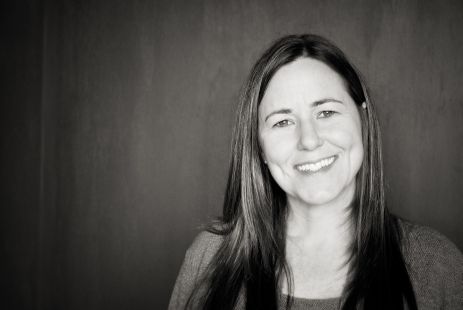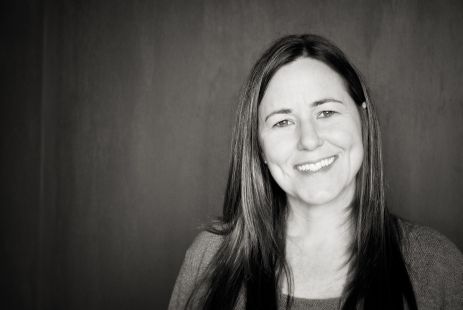 Do you ever think about all the resources, the man hours, the stuff that went into making your iPod? Your cell phone? Your computer? The clothes you’re wearing? Annie Leonard did. And then she started talking to other people about it.
Do you ever think about all the resources, the man hours, the stuff that went into making your iPod? Your cell phone? Your computer? The clothes you’re wearing? Annie Leonard did. And then she started talking to other people about it.
You may have seen her animated 20-minute viral video, released in 2007, The Story of Stuff — it’s been viewed more than 10 million times — about America’s take-make-waste cycle of excessive consumerism. Following the video’s success, Annie had more questions to answer, more information than could be packed into a short film.
Enough, as it turned out, for a book “The Story of Stuff: How our obsession with stuff is trashing the planet, our communities, and our health — and a vision for change,” is out today. Admittedly, the book itself is stuff, but it was produced using electronic copyediting, 100% post-consumer recycled paper, soy-based ink, and nontoxic binding and jacketing materials — so props for that.
Annie took a moment out of her trash- and toxics-reduction crusade to chat about The Story of Stuff Project, the video, and her new book.
Q. The Story of Stuff video gained a lot of attention without you doing any real promotion for it. What do you attribute that to?
A. I think it was the right message at the right time. The economy was collapsing, so it forced people to think more strategically and critically about where they put their dollars. I feel like, in a way, releasing the film was sort of like taking the temperature of the public. Because it was so accessible and simple without dumbing down, it offered people the narrative framework to talk about the issues. My goal in making the film was to turn the volume up on thinking and talking about the problems with how we currently make, use, and throw away stuff.
Q. Is there anything that you would change about the video now?
A. There are two lines I think are misunderstood. When I talk about the 1 percent of stuff is still in use. [From the video: “Guess what percentage of total material flow through this system is still in product or use six months after their sale in North America — 1 percent. In other words, 99 percent of the stuff we run through this system is trashed within six months.”] Because of where it is in the film, people often misinterpret that as 1 percent of what we buy. The other line that I’m ambivalent about is the part where I say it’s the government’s job to take care of us. Some people misinterpret that to think I mean that they should remind us to floss our teeth and tuck us into bed at night. Maybe I should have said is it is the government’s job to make sure things are fair and good and safe. I think “take care of us” was shorthand that triggers different things in people’s minds.
Q. The video is being used as a teaching tool for students in classrooms across the country. Were you expecting that?
A. In no way was I even remotely thinking I was making this film for kids. It’s very inspiring that people like it. My real goal was to talk to my peers in the progressive movement. I wanted people like recycling activists and forest activists and gender rights activists and economic rights activists. I wanted to encourage all of us to think about the broader context of the issue that we’re working on, to sort of deepen our analysis.
Q. The film got a lot of attention from detractors as well. And I know you’ve addressed Glenn Beck’s comments specifically on your blog and in other interviews, but have you seen the corresponding videos that Lee Doren made?
A. I did watch part of them. The part where I lost my interest was when he was attacking me for saying we’re using up our resources. He had a cross section of the earth and said the earth is 4,000 miles deep, and we’re nowhere near using up our resources. I’ve lived in India, in Bangladesh, in Haiti, and I imagined going to those villages and handing them a shovel and saying, “Dig deeper.” It was nuts. It became clear to me that it wasn’t an attempt at fact-based, rational discussion. But still, I’m glad he did it. I’d rather we be arguing about this stuff than ignoring it.
Q. So it’s just a loud minority that disapproves of The Story of Stuff?
A. I should say less than 1 percent are angry. And the majority of those are just following the exact lines they’re getting from Glenn Beck. It’s not even rigorous critical thinking. There have been other critiques. I really appreciate the people who give honest critiques, and the number one critique we get is that I left something out. In which case I say, “Duh, it’s a 20- minute cartoon.” Of course I left something out. But it’s interesting to see what’s on people’s minds, and by far the number one thing people say I left out is population. And second is industrial food systems and how whacked they are.
Q. You said that with the video, you were initially hoping to reach out to your peers. But with the book, who were you hoping to reach?
A. Well I got tens of thousands of emails from people asking for more information. One woman wrote and said, “I’m an SUV-driving, republican housewife from Texas, and I would never have watched your film if I knew what it was about.” She said that she had never thought about any of these issues before, and it’s made her rethink everything. I feel like people’s interest was piqued. There are a lot of incredible environmental books out there obviously, but I think a lot of them are a little intimidating to people who are new to the issue. So my book is not meant for diehard environmentalists. It’s meant for the people who are new to the issue who want a slightly easier entrée to learn about some of these issues.
Q. What would you encourage people to do on an individual level?
A. People ask me that a lot, and I like to see where they are so I ask them, “What can you think of to do?” They say, “I can recycle. I can ride my bike more. I can buy organic. I can buy this instead of this.” Really individual actions as opposed to, “I can work with my neighbors to shut down this toxic factory.” We have a consumer part of ourselves and a citizen part of ourselves. And throughout this country’s history, the citizen parts of ourselves have accomplished enormously wonderful things to make this country a better place. But in recent decades, I feel like the consumer part of ourselves is spoken to and validated and nurtured so much that we’ve over-identified with it and the citizen part of ourself has atrophied. We just need to start reinvigorating that citizen muscle. So the number one thing to do is to hook up with others who share your values and start making some real change.
Q. What signs of hope for positive change have you witnessed since you started the project?
A. When I was making The Story of Stuff film, I went back and looked at all the latest information and all these facts so I could make sure I had the most up-to-date credible information, and it was such a disheartening process because on every issue, there’s some species lost to deforestation, to economic inequality. And all the web pages said things like, “Consensus of scientists warns of imminent collapse.” It was really bad. But the antidote to that was how, all over the world, people are doing things to reject this system and help transform our economy to be more sustainable and fair. It is incredible how everywhere you look, on every corner of the planet, there are people that are charting a new path. The other thing that helps me maintain hope is that I know that change is inevitable. We can’t keep using one and a half planet’s worth of resources indefinitely. But the question is, are we going to change by design or by default? Either way it’s going to be a lot of hard work. But if we change by design, we can be so much more intelligent and strategic and compassionate about it. If we change by default, if we dig our heels in and say we’re not changing the American way of life, we’re still going to change because we’re butting up against ecological limits. But it’s going to be a lot uglier and a lot more violent. But I have enormous faith in the goodness of humans, so I think we can pull it off.
Q. Has there been any stuff that’s been difficult for you to give up or part with or not consume?
A. Not really, partly because I just don’t really focus on the individual piece so much. I really don’t fall into that camp where it’s your fault because you left the water running when you brushed your teeth. So I just don’t spend a lot of time around the guilt and the individual action stuff. That said, I lead, by U.S. standards, a pretty low impact life. Way before The Story of Stuff, I did not bring into my house PVC plastic and brominated flame retardants and Teflon pans and that kind of stuff. The main thing I do that reduces my consumption is I live in a community in which my neighbors and I are really good friends. We have six houses together on the block, and we’ve taken down the fences so we have a shared backyard; and we share a lot of things. So among our six families, we have one pickup truck that we share and one ladder that we share and one barbeque and one hot tub and one gardening pruner; and because we share things, we have to buy so much less. Less stuff but more friends.



